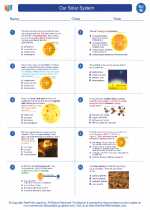Seasons
The Earth experiences different seasons throughout the year due to its axial tilt and orbit around the sun. This phenomenon results in changes in the amount of sunlight and temperature that different parts of the planet receive at different times of the year.
Causes of Seasons
The primary cause of the seasons is the 23.5-degree tilt of the Earth's axis relative to its orbit around the sun. This tilt causes different parts of the Earth to receive varying amounts of sunlight at different times of the year. When a particular hemisphere is tilted towards the sun, it experiences summer, while the hemisphere tilted away from the sun experiences winter. The equinoxes occur when the axis is perpendicular to the sun, resulting in equal day and night lengths, while the solstices occur when one hemisphere is tilted most directly towards or away from the sun, resulting in the longest and shortest days of the year.
Effects of Seasons
Seasons have a significant impact on various aspects of life on Earth. They influence weather patterns, plant growth, animal behavior, and human activities. Understanding the seasons is crucial for activities such as agriculture, migration, and resource management.
Study Guide
- What causes the Earth to experience different seasons?
- Explain the relationship between the Earth's axial tilt and the occurrence of seasons.
- How do the equinoxes and solstices relate to the Earth's tilt and its impact on seasons?
- Discuss the effects of seasons on weather, plant growth, and human activities.
- Why is it important for humans to understand the concept of seasons?
Understanding the concept of seasons is essential for comprehending various Earth processes and phenomena. It also provides insights into the interconnectedness of natural systems and human societies.
.◂Science Worksheets and Study Guides Eighth Grade. Our Solar System

 Worksheet/Answer key
Worksheet/Answer key
 Worksheet/Answer key
Worksheet/Answer key
